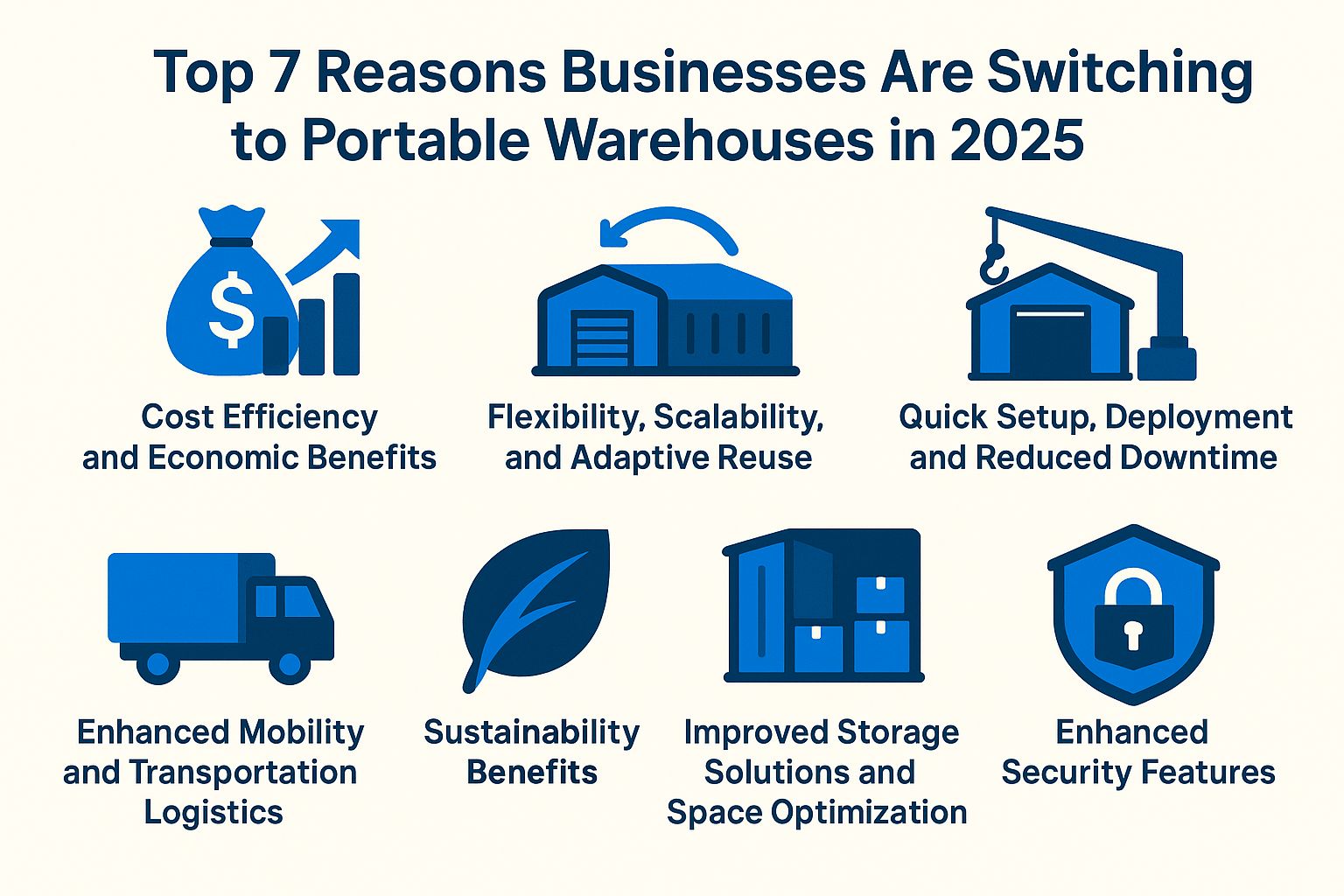
Turn your storage problems into easy answers. As businesses change, being able to adjust is essential. Portable warehouses are becoming very important for companies in 2025. From saving money to improved security, these adaptable structures provide various advantages. Wondering why lots of people are changing? Let’s look at the seven main reasons behind this trend and how it could change the way you work.
Overview of Portable Warehouses
Portable warehouses, often modular structures, offer businesses a temporary yet scalable solution for storage needs without the long-term commitment of traditional facilities. These warehouse solutions are essential for better logistics and supporting business expansion.
Many companies use mobile storage units such as those from PODS or U-Haul. These units can be brought straight to a work location. These units typically range from 8 to 16 feet in length, accommodating various needs based on inventory size. Their portability makes workers more productive and simplifies tasks.
Alternatively, modular buildings, such as those offered by Mobile Mini, provide a more durable solution and can be customized for specific operational tasks. These buildings are especially useful in city planning, where space optimization is tight and fast setup is necessary, letting companies quickly respond to shifting needs. Their ability to change helps save on real estate costs and choose sites effectively. Related insight: 6 Best Uses to Consider for Portable Office Buildings.
Importance of Adaptability in Business
In the current fast-moving business world, being able to change is important; portable warehouses offer the needed flexibility to shift operations quickly when demand changes. They improve how quickly businesses can respond to changes and help follow zoning regulations.
For example, during the COVID-19 pandemic, many retailers used mobile warehouses to handle increases in online orders. Companies like Walmart and Amazon quickly established temporary storage units near urban centers, reducing delivery times significantly. This planning was essential to keep customers happy and the business running smoothly.
To implement this plan, businesses can use Modular Storage Solutions for custom units or hire local storage companies that provide portable options.
Switching our approach reduced costs and improved services, demonstrating how being open to change increases efficiency.
Reason 1: Cost Efficiency and Economic Benefits
Portable warehouses reduce the need for large initial spending, helping businesses use their funds wisely and increase profits. The cost savings lead to better profits and lower expenses.
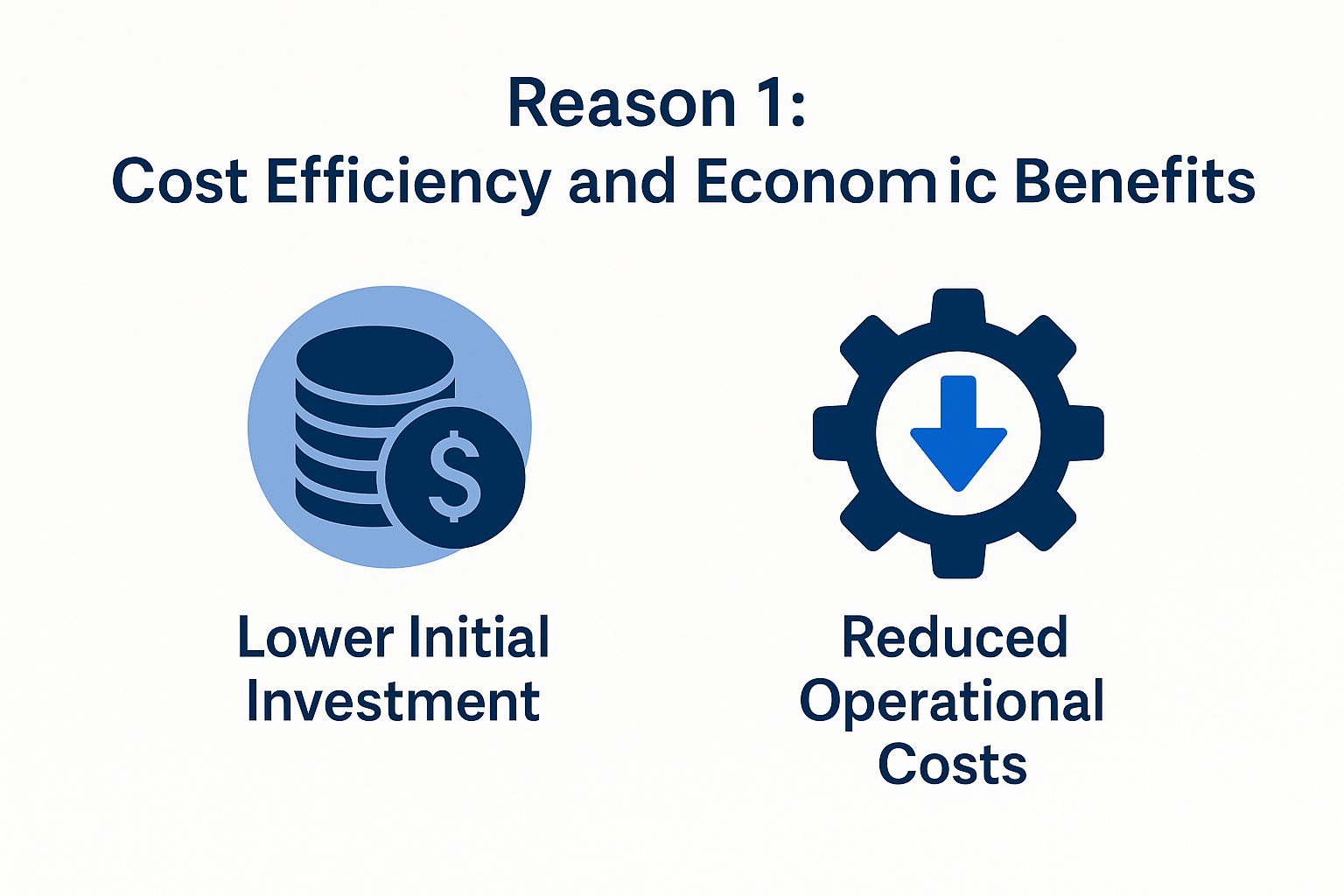
Lower Initial Investment
Investing in portable warehouses can cost 30-50% less than traditional buildings, with rental options available from $1,500 to $3,000 per month, depending on size and location.
The cost savings primarily stem from reduced construction and maintenance expenses. For instance, setting up a permanent warehouse can range from $100,000 to $300,000, plus extensive permits and utilities.
In contrast, a portable warehouse may involve minimal setup fees and often comes equipped with necessary infrastructure. Companies often find that using a portable solution for seasonal inventory reduces long-term financial commitments.
Businesses can improve cash flow and reduce unused space during slow times by selecting a rental period that matches inventory highs.
Reduced Operational Costs
Businesses can achieve up to 40% reduction in operational costs by utilizing portable warehouses due to less maintenance and lower utility expenses.
To maximize these savings, consider the following actionable strategies:
- Regularly inspect and maintain the unit to avoid costly repairs;
- Use energy-efficient lighting and climate control systems to reduce utility bills;
- Evaluate staffing requirements by using computerized inventory control systems.
For example, using solar panels can reduce energy costs, while software like Fishbowl Inventory can make operations more efficient without needing more staff. Using these methods helps businesses improve their portable warehouse setup and reduce ongoing costs.
Reason 2: Flexibility, Scalability, and Reuse
Portable warehouses allow businesses to grow and meet changing demands quickly without major delays. This supports disaster recovery and allows for advanced materials integration (see also: How Much Do Portable Warehouses Cost?).
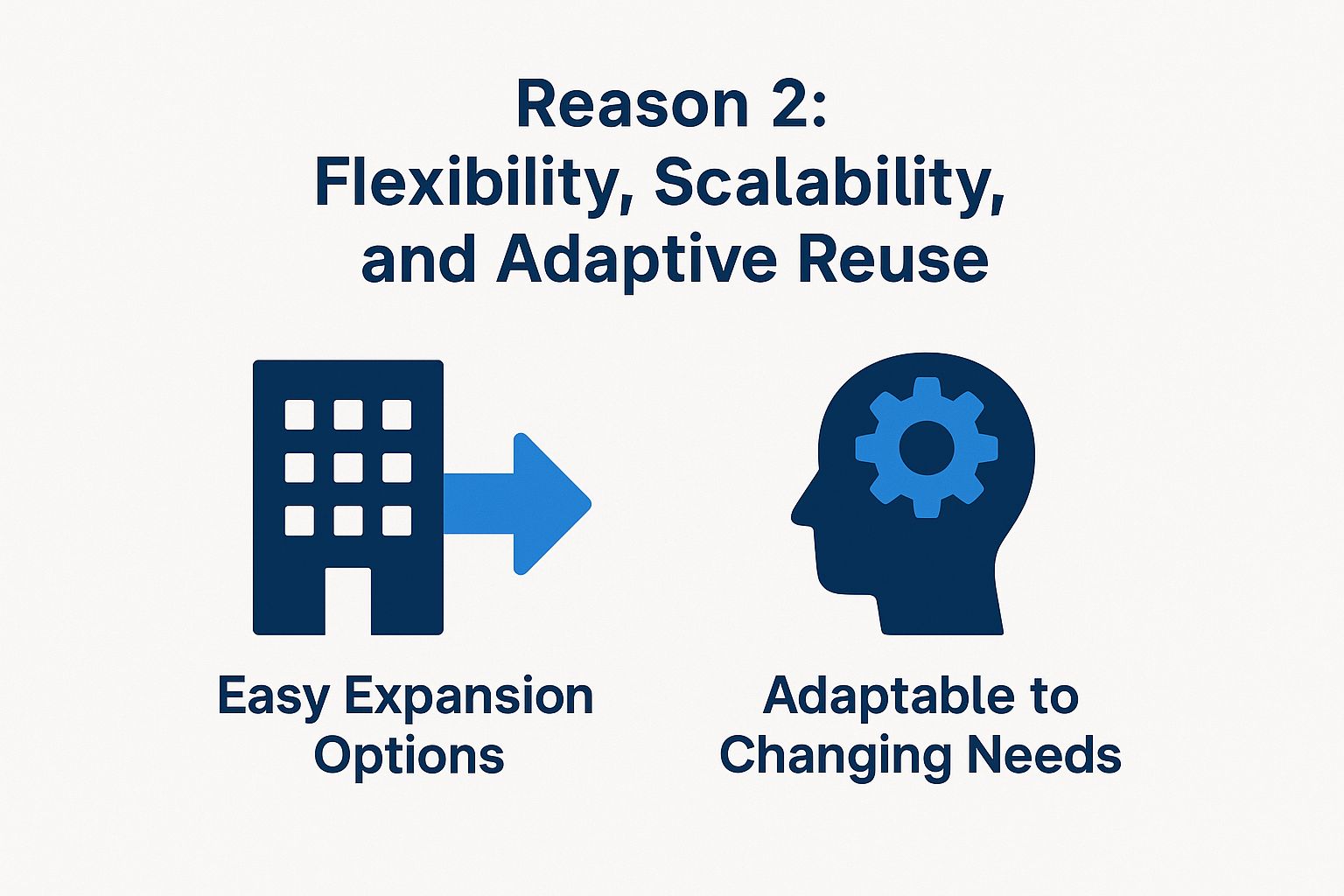
Easy Expansion Options
Portable warehouses can be easily added or relocated, allowing businesses to expand their storage capacity quickly in response to market demands.
For instance, a retail company might implement portable warehouses during peak seasons, such as holidays, to manage surplus inventory.
Tools like Mobile Mini or PODS provide customizable options to meet different storage needs.
In one case, a food distributor increased their operational efficiency by 30% simply by using portable storage to handle seasonal demand fluctuations.
This method reduces rental costs and improves workflow by giving quick access to products when needed.
Adaptable to Changing Needs
With the ability to quickly adjust to changing business needs, portable warehouses serve various industries, from construction to e-commerce.
For instance, in the construction sector, these warehouses can store tools and materials on-site, streamlining workflow. In e-commerce, they facilitate rapid order fulfillment by acting as localized hubs.
Businesses can easily set up shelving systems for convenient access or include climate control for delicate products. Tools like modular shelving units or mobile racks improve efficiency.
Altering the operations of these warehouses can significantly reduce expenses and increase service speed, making them highly effective in various work environments.
Reason 3: Fast Installation, Implementation, and Less Time Offline
Setting up and starting to use portable warehouses can be done in as little as 14 days, allowing operations to begin right away. Quick setup is important to reduce transportation problems and improve worker safety.
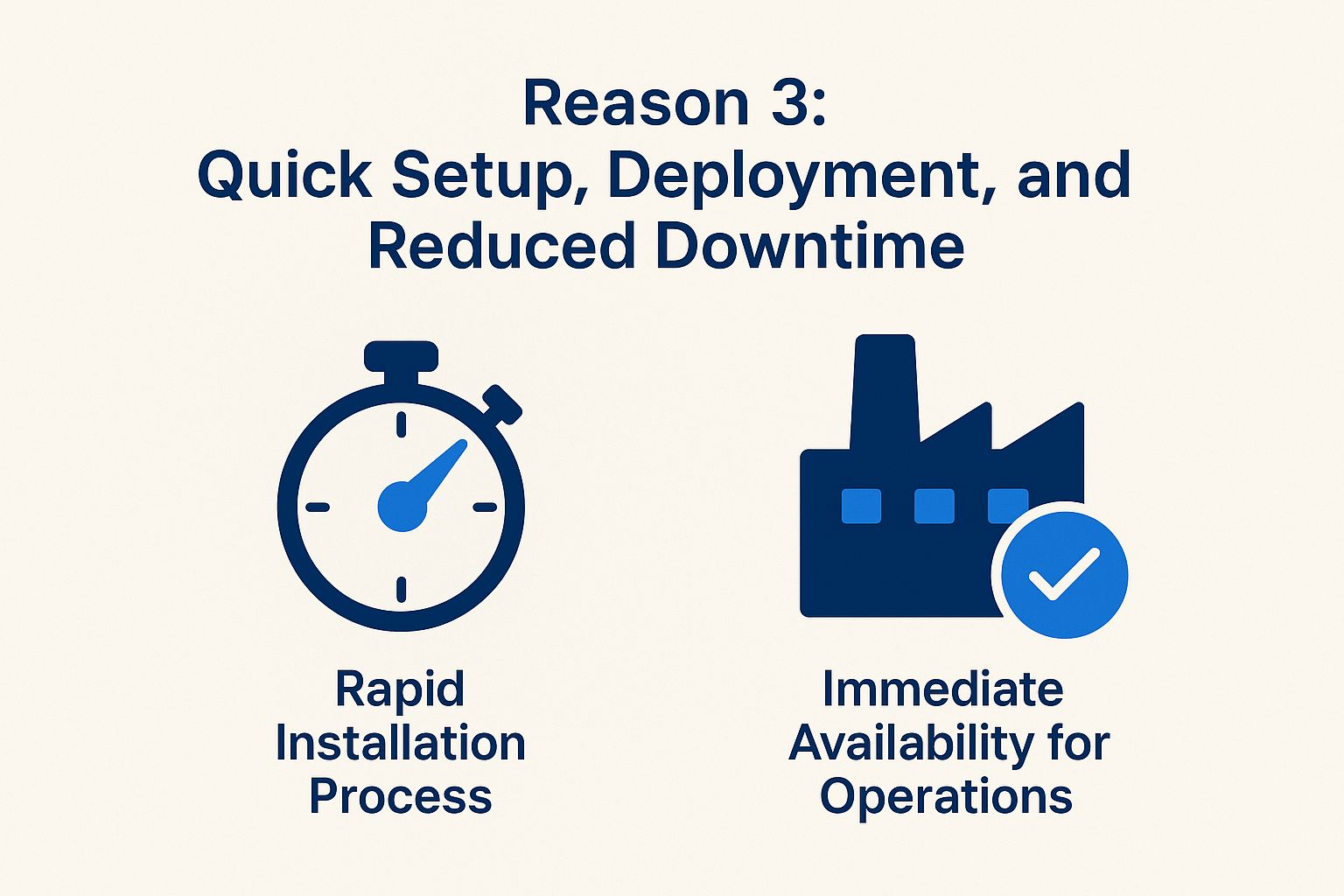
Rapid Installation Process
Portable warehouses can be put up in just a few weeks. Some companies offer setup services starting at $1,000, causing little interruption to your work.
To begin the installation process, first assess your site’s requirements, including space, zoning laws, and access to utilities.
Next, select a provider; reputable options include:
- Boxman Studios
- ModSpace
- Mobile Mini
Each providing tailored solutions. After that, schedule an on-site consultation to finalize design and logistics. Most setups usually take 1-2 weeks, focusing on quick delivery and setup.
Make sure you have a plan for upkeep after installation to keep things running smoothly over time.
Immediate Availability for Operations
Portable warehouses allow businesses to start using storage immediately, making it simple to adjust operations quickly during busy times.
For example, a retail store facing increased demand during holiday sales can use a temporary portable warehouse to handle extra inventory.
Tools like PODS and Go Mini’s offer flexible rental plans that allow businesses to scale storage as needed. Transitioning to this model helps businesses maintain customer satisfaction without the risk of stockouts.
Using inventory management software like TradeGecko helps keep track of stock in both fixed and temporary locations, allowing for a smooth supply chain even during busy times.
Reason 4: Improved Movement and Transport Management
Portable warehouses allow businesses to move storage facilities easily, often without major logistical issues. Their relocation capabilities facilitate business resilience and support infrastructure flexibility.
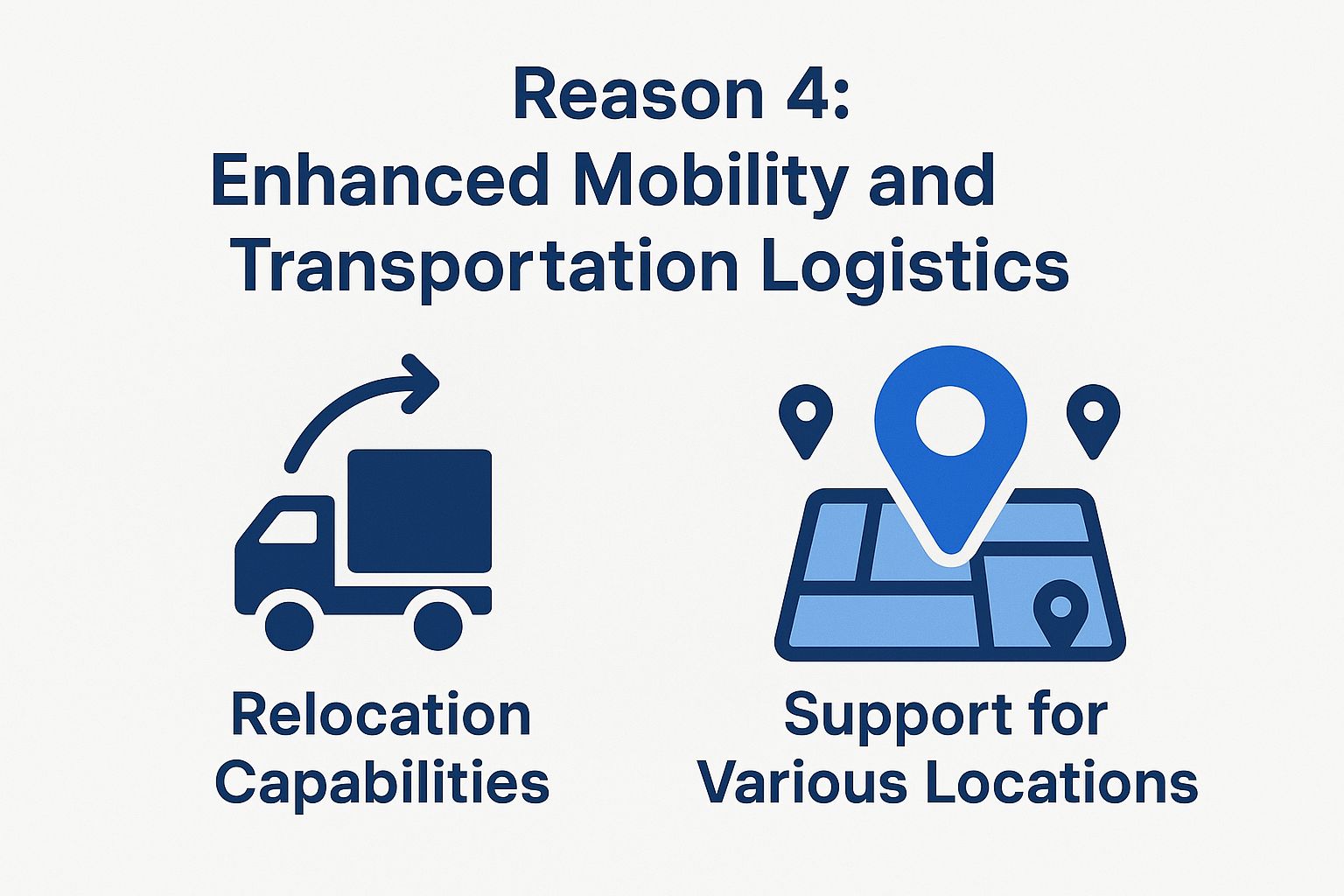
Relocation Capabilities
Portable warehouses can be moved to new locations with ease, often within a single transportation cycle, reducing downtime during transitions.
This flexibility has been particularly beneficial for companies like Amazon and Walmart.
For instance, during peak seasons, Amazon can relocate its portable warehouses closer to high-demand areas, ensuring quicker delivery times. Walmart uses mobile warehouses to help with big events or busy seasons, so they can quickly meet changing demands.
To make these moves easier, businesses often use logistics software like Fleet Complete or Project44. These tools help keep track of inventory and improve transportation routes, reducing problems during the move.
Support for Various Locations
With their flexible designs, portable warehouses can be used in city, countryside, or far-off places, meeting many business needs.
For example, a construction company in a crowded city might use a portable warehouse to keep tools and materials at the work site, effectively using space and allowing for easy access.
Meanwhile, a farm in the countryside can use these warehouses to keep tools and crops, allowing for easy access without needing fixed buildings.
Businesses in remote areas can use mobile warehouses for seasonal inventory, using flexibility to save on building permanent facilities.
This flexibility makes portable warehouses an optimal choice across various industries.
Reason 5: Improved Storage Solutions and Space Optimization
Portable warehouses offer customized storage options that improve how businesses manage their inventory and use space. They are important for handling stock and using resources effectively.
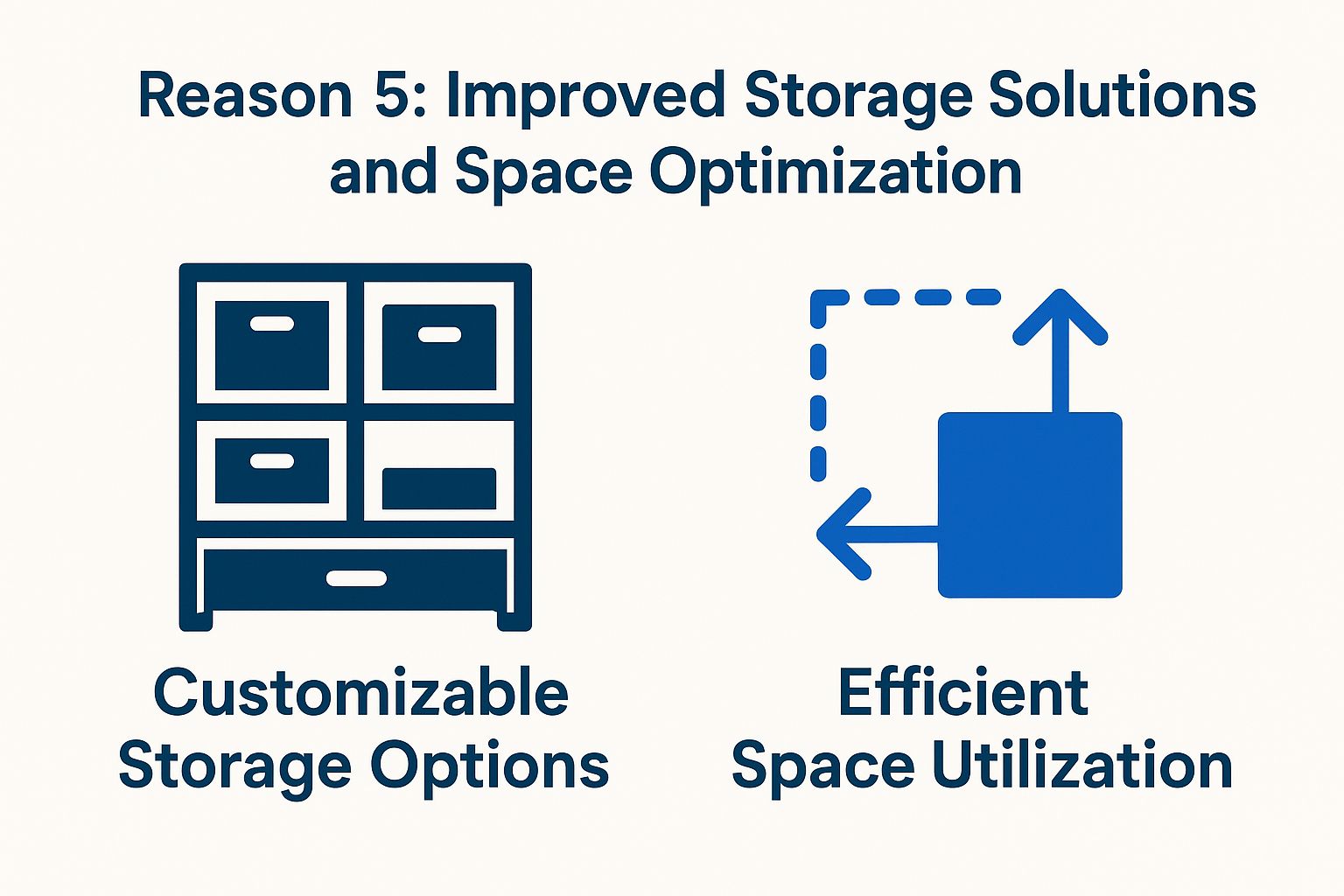
Customizable Storage Options
Businesses can customize portable warehouses to meet specific storage requirements, with configurations available such as shelving, climate control, and security features.
For instance, a retail store may opt for heavy-duty shelving units to maximize vertical space for inventory. In contrast, a pharmaceutical company might need climate control options to keep temperature-sensitive products usable.
Security measures, such as strong locks or video monitoring, are important for storing sensitive data. Installing mobile shelves on rails allows for easy access and makes better use of floor space.
These factors make portable warehouses suited to handle the specific needs of different industries.
Efficient Space Utilization
Portable warehouses are designed to maximize space utilization, often achieving up to 30% more efficient storage compared to traditional warehouses.
To make the most of space in portable warehouses through cost-effective strategies, use shelves that go up high. For example, using adjustable shelving can accommodate varying heights of products and maximize cubic space, enhancing modularity in design.
Another effective method is to use mobile racking systems. These systems allow the shelves to move and close the gaps when access isn’t needed, which saves space and improves efficiency. Companies like IKEA have used these methods, showing a 40% increase in storage space by reworking their portable setups.
Employing warehouse management software can help track inventory in real-time, ensuring optimal arrangement and accessibility, thus enhancing inventory tracking and performance metrics.
Reason 6: Sustainability Benefits
By using eco-friendly materials and methods, many portable warehouses greatly lower their environmental impact and contribute to sustainability efforts.
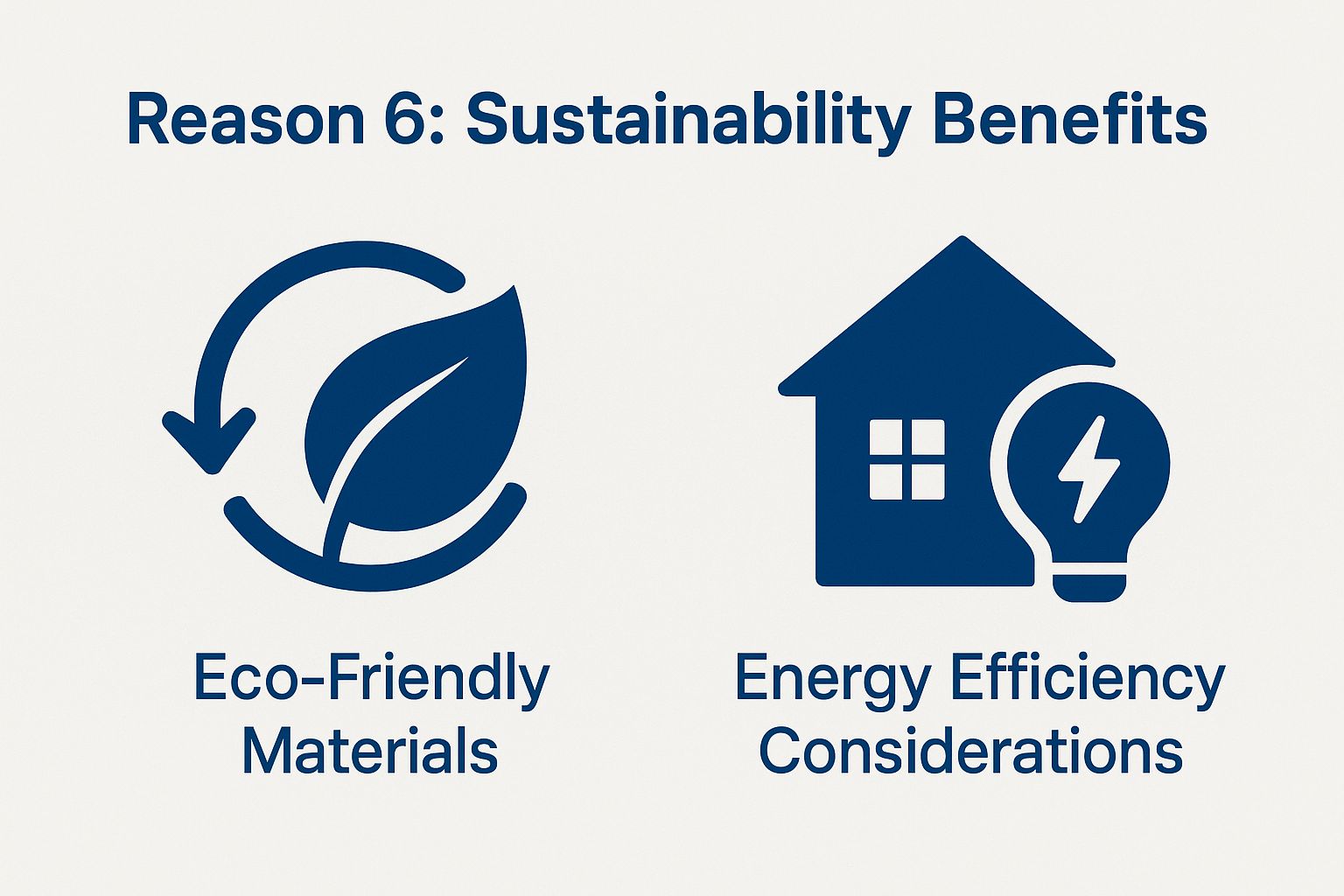
Eco-Friendly Materials
Many manufacturers now offer portable warehouses made from recycled materials, contributing to sustainability goals and reducing waste.
These buildings often use recycled steel, which can reduce energy use during production by up to 75%. Some companies use eco-friendly insulation materials such as cellulose, made from recycled paper, which offer great thermal performance.
For instance, a study by the U.S. Department of Energy shows that using such materials can lower energy costs by approximately 30%. Working with suppliers focused on eco-friendly methods helps the environment and improves the quality and performance of portable warehouses.
Energy Efficiency Considerations
Portable warehouses are often built to save energy, which reduces running costs and is better for the environment. They may include solar panels and excellent insulation.
One notable case is the implementation of solar panels at a portable warehouse in Texas, which resulted in a 30% reduction in electricity costs.
Using high-quality insulation keeps the temperature stable and cuts down on HVAC use, resulting in big savings and supporting waste reduction.
Companies like Eco-Structure offer packages that integrate these features seamlessly, showcasing how investing in energy efficiency can lead to lower operational costs and a smaller carbon footprint.
Reason 7: Enhanced Security Features
Modern portable warehouses have high-tech security systems to protect stored items from theft and weather-related damage. See also: portable guard shacks that provide additional security and monitoring options for these facilities.

Advanced Security Technologies and Technology Integration
Features such as surveillance cameras, alarm systems, and biometric locks have become standard in portable warehouse designs, ensuring asset protection and providing a competitive advantage in security measures.
To improve security, add motion sensors, electronic access controls, and consider using automated warehouses for better safety.
For instance, installing motion sensors can alert you to any unauthorized activity, while systems like Kisi offer remote access management, allowing you to grant or revoke access in real-time.
Using GPS tracking devices on expensive items lets you keep track of where they are at all times. Many businesses have seen a 30% reduction in theft after using these advanced security measures, proving them essential for protecting items in mobile warehouse setups.
Protection Against Environmental Factors
Portable warehouses are designed to withstand various environmental factors, including extreme temperatures and moisture, protecting inventory from potential damage.
To make them stronger, many portable warehouses include features such as:
- Reinforced insulation to regulate internal temperatures, ensuring durability
- Weather-sealed doors to prevent water ingress
- Rust-resistant materials for durability
For example, a portable warehouse with double-walled construction can maintain stable conditions even in freezing climates, while models equipped with UV-resistant tarps protect goods from sun damage, showcasing advancements in warehouse design and construction flexibility.
Using these storage options keeps your inventory safe and follows environmentally friendly methods by cutting down on waste from products going bad, aligning with sustainability and procurement goals.

About the Author
I’m James Holloway, a Texas A&M University graduate with a degree in Construction Engineering and the owner of a successful prefab office building company in Texas. For the past 12 years, I’ve helped businesses across the state create efficient, compliant, and cost-effective portable office solutions that work as hard as they do. As a contributor to US Construction Trailers, I focus on helping business owners make smart investments in modular space.

